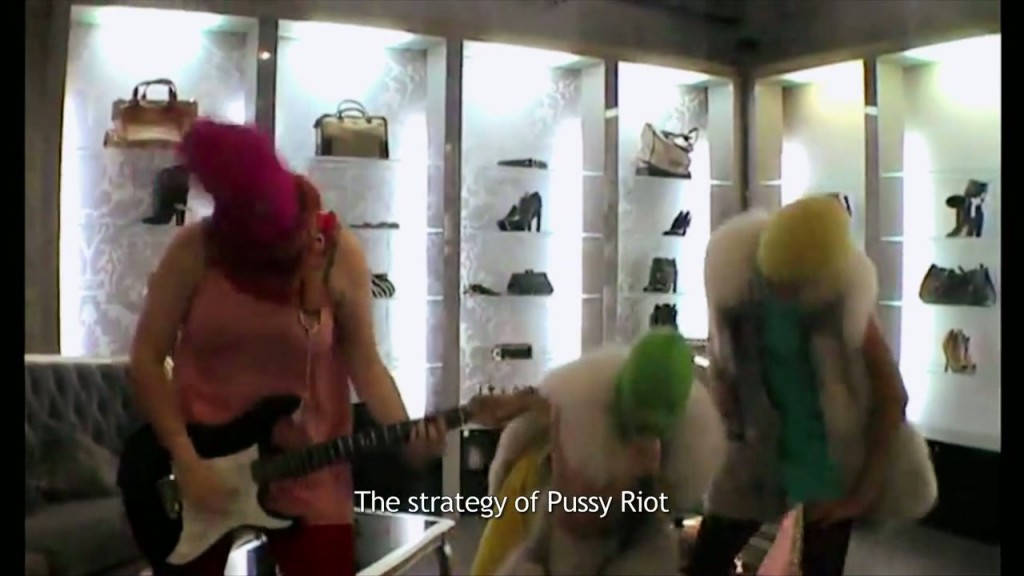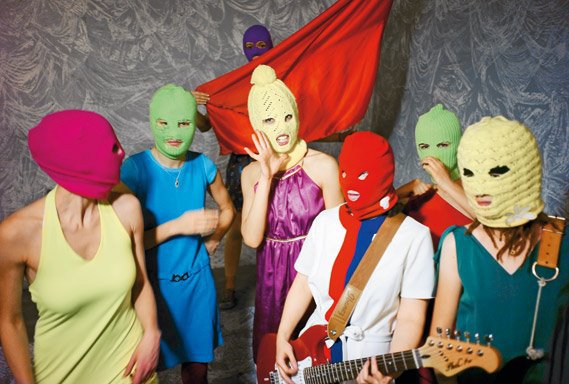INHALE is a cultural platform where artists are presented, where great projects are given credit and readers find inspiration. Think about Inhale as if it were a map: we can help you discover which are the must-see events all over the world, what is happening now in the artistic and cultural world as well as guide you through the latest designers’ products. Inhale interconnects domains that you are interested in, so that you will know all the events, places, galleries, studios that are a must-see. We have a 360 degree overview on art and culture and a passion to share.

I’m sure that many of you have heard about Pussy Riot, the Russian feminist punk rock protest group whose members were arrested in 2012 and sent to prison, charged with hooliganism. Well, an extreme case like this couldn’t go unnoticed since it provokes discussions about the freedom of expression, human rights or morality. Therefore, in 2013, the film directors Mike Lerner and Maxim Pozdorovkin decided to make a documentary about it, Pussy Riot: a Punk Prayer.
The film focuses on several key moments from the history of the group which was founded as a reaction to the re-election of Vladimir Putin as president of Russia. Their strategy was to appear in different public spaces (subways, squares, luxury-stores) and to shock the public with their socio-political messages, namely to criticize the excessive nationalism of Putin, the capitalism, the authoritarian regime or to fight against a male view of the world.
In 2012, feminist activists from Pussy Riot performed a concert inside the Christ the Savior Cathedral, the holiest place from Moscow for any Orthodox believer, space which symbolizes the union of church and state. They decided to perform at the altar in their usual way: wearing coloured balaclavas, tights and minidresses, screaming a punk prayer and waving their hands in the air. As a result of this agit-prop guerilla-performance, three members of this group were arrested.
Featuring interviews (with the band members, with their families who support their daughters, with the pro and con protesters) with publicly available footage (courtroom footage, DIY videos of their rehearsals and performances, speeches of Putin or of church leaders), the documentary tells the story of these three members: Nadia, Masha and Katia. The filmmakers try to understand the real people behind the masks, they try to illustrate the way in which their act (a 40-second punk prayer protest) became an event of national, even global importance and to present the absurd and injust trial they had. The girls were sentenced to two years in a women’s corrective labor colony where they are still today, except Katia, who was released on probation, following an appeal.
The purpose of this documentary is obviously a political one. Speaking about Pussy Riot already implies depicting the background in which the scandal occurred, namely contemporary Russia. The two directors portray a conservative Russia, a system rotten from head to tail, with corrupt politicians who use the Orthodox church to maintain their authority and with a society that is not ready to understand the performance art activism. In this context, any protester who tries to break the status quo, to free the society from prejudicies and stereotypes is considered from the beginning a Bolshevik, a real demon.
The documentary (rewarded with a World Cinema Documentary Special Jury award for Punk Spirit at Sundance Film Festival and bought by HBO) assume a form of social criticism because it describes various kinds of discrimination. The film directors are trying to avoid the dogmatism, so they chronicle the event in a dialectical manner, showing the two sides of the scandal (the most intriguing exemple: the Russian Orthodox Church calls for a prayer meeting at the cathedral to protest against Pussy Riot).
Created just in six months, the documentary has the aspect of something improvised: it dramatizes the information we have already from the newspapers, but it doesn’t offer us a deeper understanding of the problem; it deserves though to be seen, as an honorable document of a subject of such relevance.
by Andreea Andrei
Andreea Andrei studied Performing Arts (Arts du Spectacle) at the Université Libre de Bruxelles. For the moment she is an independent researcher, interested in the critical potential of art and in the artistic power of criticism.




























































